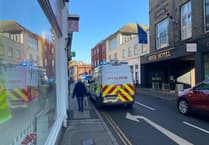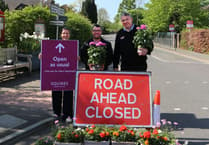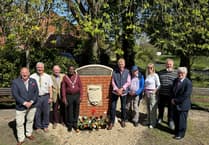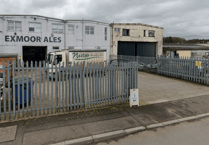Many readers will be aware the central zone of Farnham town centre is a designated Conservation Area (CA).
This means certain aspects and buildings in the area are protected by statute, so the heritage features can be enjoyed by current and future generations.
There are five other conservation areas in the town, all chosen for characteristics specific to their location. These are not covered here.
History of the town centre
The history of Farnham can be traced back to at least the Roman period; the name Farnham was first mentioned in a charter dating to 688AD during the Saxon period.
The town gained a strong ecclesiastical presence, and became an important stopping point between Winchester and London.
It became wealthy from its farming, brewing and craft industries. It also grew as a significant market town.
The oldest buildings we still see today are Farnham Castle and St Andrew’s Parish Church, which both date back to the 12th century, Norman period.
The town centre is generally referred to as a Georgian market town since many of the historic buildings we are familiar with were constructed in the 18th century during the Georgian period.
Some buildings pre-date this period, so the heritage buildings mostly stretch from the 17th century through to the 20th century.
There are nearly 400 protected buildings and other structures in the town centre CA.
Listing of protected places
English Heritage and Historic England work together to protect and promote English heritage assets. Historic England maintains a list of all the buildings and other entities that are protected. These include parks, monuments and any permanent structures that are designated to have special architectural or historic interest. The assets are graded:
- Grade I (one) – exceptional interest
- Grade II (two) – special interest
- Grade II* (two star) – more than special interest
- Buildings of Local Merit – these are further buildings and structures listed by the local authority
Across the country, Farnham has more listed buildings than most towns of comparable size.
In the town centre CA we have assets in each of these categories:
- Parks: Farnham Park (Grade II)
- Scheduled monuments: Farnham Castle
- Grade I Listed buildings: St Andrew’s Parish Church, Willmer House (home of museum), Gatehouse and Bishop’s Palace (at Farnham Castle)
- Grade II* Listed Buildings: About 40 buildings
- Grade II Listed: About 200 buildings and other structures
- Buildings of local merit: About 120 buildings and other structures
Protection
Waverley Borough Council manages the conservation areas in its domain; there are 42 across the borough.
For each CA, the borough is responsible for undertaking an assessment of the area and producing a management plan, which identifies schemes to enhance and preserve the area.
Once adopted by the council, the management plan becomes a material consideration when any changes are being proposed that might affect the listed buildings, the streetscene and anything that might be detrimental to the character of the area.
Changes to a listed building require special listed building planning consent, which is monitored by a heritage officer. There can be severe penalties associated with changes that damage these buildings since it is important to preserve their original features.
Protection in Farnham
Most Farnham people are aware of the importance of the town centre CA. In its entirety, the CA defines the character of the town as a place of interest, drawing visitors, shoppers and new residents to the town.
It is also the prime community centre for the town, being the place to meet, hosting entertainment and civic events.
It is unfortunate the CA, today, is not as impressive as it deserves to be. It has a tired, somewhat untidy look that detracts from its potential.
Many of the buildings need attention, the streets need maintenance and a sense of calm needs to be restored, reflecting the historical character of the area.
Much of what we are experiencing now results from the impact of too many cars in an area that was not designed, centuries ago, for motor vehicles, and struggles today to accommodate the traffic volumes.
Somehow, we need to find solutions to these problems so people can reclaim the space, lessening the hazards of safety and air pollution.
Traffic also comes with increasing levels of road signage and similar clutter that detracts from the character of the area.
Role of councils
As explained above, Waverley has prime responsibility for the conservation area. Farnham Town Council has also taken an increasing role in recent years, now running its own committee which advises on projects to enhance the CA.
In effect, the two councils work in unison, with Farnham putting in more of the preparatory work to assist the borough.
The town council has an action plan for desired improvements; alas, it seems to take years to deliver some of the difficult challenges.
These are some of the current projects:
- Action to get refuse bins removed from sight, especially in some of the yards where they are unsightly and condone anti-social behaviour.
- Action to bar the placement of estate agent boards in the CA; they are unsightly, and the fixings damage the protected buildings. It is hoped a voluntary arrangement can be reached with all the agents so that none suffer a competitive disadvantage.
- Action to tighten up control of permitted development (not requiring planning permission) in the CA. While the listed buildings are already protected, non-listed buildings are less constrained, so these buildings can inadvertently have a negative impact on the surrounding area.
- Action to ensure shop fronts conform with the Waverley shop front design guide. The guide is there to ensure the character of the shopping area is respected. It covers design, colour choice, branding and lighting schemes that harmonise with the heritage features of the area.
These are complicated issues, requiring much negotiation and co-operation. There are statutes that can be applied but these require further consideration.
Community involvement
Finally, it is appropriate to note Farnham’s civic societies work with the councils to protect and enhance the conservation area.
In particular, the Farnham Society, the Farnham Building Preservation Trust and the Farnham Public Art Trust have assisted in the preparation of the management plan (2012), and they are active in the ongoing activities.





Comments
This article has no comments yet. Be the first to leave a comment.